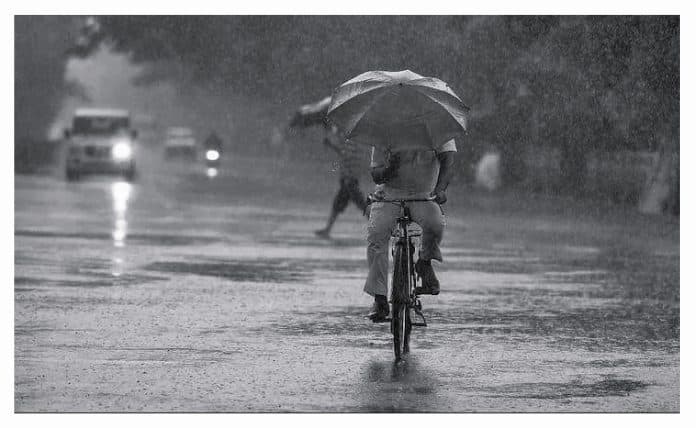Planning a Trip to Tanzania, Africa in August? Here’s What You Need to Know About the Weather
Planning a trip to Tanzania, Africa in August? Don’t forget to pack your sense of adventure and a raincoat! In this article, we’ll explore what you need to know about the weather in Tanzania Africa in August, providing you with the information on what to pack and leave out for the trip during this time of year.
Tanzania’s climate is typically hot and humid due to its proximity to the equator, but August brings some changes. As the country enters its dry season, temperatures become milder and more comfortable for travelers. However, it’s important to note that August is also the peak of Tanzania’s “short rains” season. Though rainfall is generally brief and sporadic, it can still impact your travel plans, especially if you’re visiting popular destinations like Serengeti National Park or Mount Kilimanjaro.
If you’re planning a safari, the weather in Tanzania Africa in August makes it an excellent time to witness the Great Migration in the Serengeti, as millions of wildebeest and other wildlife migrate across the plains. Just be prepared for some rain showers and pack accordingly. Additionally, if you’re climbing Kilimanjaro, the weather conditions can be unpredictable, so it’s essential to have proper gear for all eventualities.
So, if you’re ready to explore the wonders of Tanzania in August, keep reading to find out everything you need to know about the weather and make the most of your African adventure.
Weather in Tanzania in August
Tanzania experiences a unique climate due to its diverse geographical features and its location close to the equator. August marks the transition from the long rainy season to the dry season, bringing about changes in temperature and rainfall patterns.
Temperature and humidity levels
The weather in Tanzania Africa in August is generally milder compared to other months. The average daytime temperatures range from 20 to 25 d egrees Celsius (68 to 77 degrees Fahrenheit) in most parts of the country. However, it’s important to note that temperatures can vary depending on the altitude and location within Tanzania. Coastal areas, such as Dar es Salaam and Zanzibar, tend to be warmer and more humid, while the highlands and mountainous regions experience cooler temperatures.
During the evenings and early mornings, temperatures can drop significantly, especially in the highlands and mountainous areas. It’s advisable to pack layers and warmer clothing to ensure comfort during these times. Overall, August offers a pleasant climate for outdoor activities and exploration, with moderate temperatures that are suitable for most travelers.
Rainfall patterns
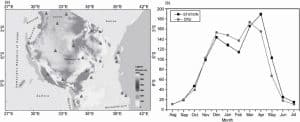
The weather in Tanzania Africa in August is known as the peak of the “short rains” season. While the name might suggest heavy rainfall throughout the month, the reality is that the rain showers are usually brief and sporadic. The majority of the rainfall occurs in the form of afternoon showers or overnight storms, allowing for plenty of daylight hours to enjoy outdoor activities.
The rain showers in August are often localized and can vary from one region to another. Coastal areas and the eastern part of Tanzania tend to receive more rainfall compared to the central and western regions. Popular tourist destinations like Serengeti National Park and Mount Kilimanjaro may experience some rainfall during this time. However, the rains are typically not continuous, and they rarely disrupt travel plans entirely.
It’s essential to be prepared for rain showers by packing a lightweight raincoat or poncho. This will allow you to continue your outdoor adventures without being hindered by the occasional rain. Additionally, waterproof bags or covers for your electronic devices and important documents are recommended to protect them from any unexpected downpours.
Wildlife and safari experiences in August
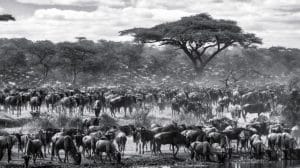
August is an ideal time to witness one of nature’s most incredible spectacles – the Great Migration in the Serengeti. The Great Migration involves millions of wildebeest, zebras, and other herbivores as they journey across the plains in search of fresh grazing lands. This phenomenon attracts predators such as lions, cheetahs, and crocodiles, making it an unforgettable safari experience.
During this time of year, the wildebeest herds are typically found in the northern part of the Serengeti, close to the Kenyan border. The river crossings are particularly thrilling to witness, as the animals brave the crocodile-infested waters. It’s important to note that the river crossings are unpredictable and may not occur at the same location every year, so it’s advisable to consult with local guides or tour operators for the most up-to-date information.
While the Great Migration is the highlight of August, it’s not the only wildlife experience available. Tanzania is home to numerous national parks and reserves, each offering a unique safari experience. Tarangire National Park, known for its large elephant herds, is an excellent choice for wildlife enthusiasts. The Ngorongoro Conservation Area, with its stunning crater and abundant wildlife, is another must-visit destination.
In addition to the wildlife, the weather in Tanzania Africa in August also offers the opportunity to witness the birthing season for many animals. This means you may have the chance to see baby wildebeest, zebras, and other young animals taking their first steps in the wild. It’s a heartwarming experience that adds an extra layer of excitement to your safari adventure.
Packing essentials for a trip to Tanzania in August

When packing for a trip to Tanzania in August, it’s important to consider the weather conditions and the activities you plan to engage in. Here are some essential items to include in your packing list:
Clothing
- Lightweight, breathable clothing: Choose comfortable and moisture-wicking fabrics to keep cool during the day.
- Long-sleeved shirts and pants: These will protect you from the sun and insects, especially during safaris or outdoor activities.
- Warm layers: Pack a fleece jacket or sweater for cooler evenings and early mornings, especially if you’re visiting the highlands or mountainous areas.
- Raincoat or poncho: Be prepared for occasional rain showers by packing a lightweight and waterproof outer layer.
- Hat and sunglasses: Protect yourself from the sun’s strong rays during the day.
Footwear
- Comfortable walking shoes: Opt for sturdy and comfortable shoes, especially if you plan to do any hiking or walking safaris.
- Sandals or flip-flops: These are perfect for relaxing at the beach or for use within your accommodation.
Miscellaneous
- Insect repellent: Tanzania is home to mosquitoes and other insects, so it’s essential to protect yourself from bites by using a repellent with at least 30% DEET.
- Sunscreen: Protect your skin from the sun’s harmful UV rays by applying sunscreen with a high SPF.
- First aid kit: Carry a basic first aid kit with essentials such as band-aids, antiseptic cream, and any necessary prescription medications.
- Travel adapter: Tanzania uses Type D and G electrical outlets, so make sure to bring a suitable adapter for your electronics.
Remember to pack light and prioritize essential items. Laundry facilities are often available in hotels and lodges, allowing you to minimize the amount of clothing you need to bring. Additionally, it’s a good idea to check with your tour operator or accommodation provider for any specific recommendations or requirements.
Best places to visit in Tanzania in August
Tanzania offers a wide range of destinations that are worth exploring in August. Here are some of the best places to visit during this time:
Serengeti National Park
Serengeti National Park is a must-visit destination for wildlife enthusiasts, especially during August when the Great Migration is in full swing. Witnessing the massive herds of wildebeest, zebras, and other animals as they traverse the vast plains is an awe-inspiring experience. The park is also home to a diverse range of wildlife, including lions, cheetahs, elephants, and giraffes. Accommodation options in and around the park range from luxury lodges to budget-friendly campsites, catering to all types of travelers.
Mount Kilimanjaro
Climbing Mount Kilimanjaro, the highest peak in Africa, is a challenging but rewarding adventure. August offers relatively mild temperatures and clear skies, making it an ideal time for climbers. However, it’s important to note that the weather conditions on the mountain can be unpredictable, and proper gear and acclimatization are crucial for a successful climb. There are several routes to choose from, each offering unique landscapes and experiences. It’s advisable to book your climb with a reputable tour operator who can provide experienced guides and necessary equipment.
Zanzibar
If you’re looking to combine your wildlife adventure with some relaxation on the beach, Zanzibar is the perfect destination. This tropical island off the coast of Tanzania boasts pristine white-sand beaches, crystal-clear turquoise waters, and a rich cultural heritage. August offers excellent weather for beach activities, such as snorkeling, diving, or simply lounging by the sea. Explore the historic Stone Town, visit spice plantations, or indulge in mouthwatering local cuisine. Zanzibar offers a range of accommodation options, from luxury resorts to budget-friendly guesthouses, ensuring there’s something for every traveler.
Ngorongoro Conservation Area
The Ngorongoro Conservation Area is a UNESCO World Heritage Site and home to the stunning Ngorongoro Crater. This caldera is one of the largest intact volcanic craters in the world and provides a unique ecosystem where wildlife thrives. August is an excellent time to visit as the weather is generally pleasant, and the wildlife sightings are abundant. Take a game drive through the crater to spot elephants, lions, rhinos, and numerous other species. Additionally, the conservation area offers opportunities for cultural experiences by visiting Maasai villages and learning about their traditional way of life.
Tarangire National Park
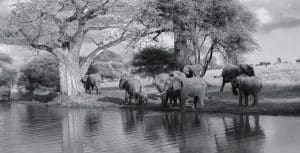
Tarangire National Park is known for its large elephant herds and diverse birdlife. August marks the beginning of the dry season, and wildlife congregates around the Tarangire River, offering excellent game viewing opportunities. In addition to elephants, the park is home to lions, leopards, giraffes, zebras, and numerous antelope species. The landscape is characterized by baobab trees, open savannah, and seasonal swamps, creating a unique and picturesque setting for your safari adventure. Stay in one of the lodges or campsites within the park for an unforgettable wildlife experience.
Safety tips for traveling in Tanzania in August
Tanzania is generally a safe destination for travelers, but it’s always important to take precautions to ensure a smooth and enjoyable trip. Here are some safety tips to keep in mind when traveling in Tanzania:
Health and hygiene
- Consult your doctor or a travel clinic before departing for Tanzania to check if any vaccinations or medications are recommended.
- Drink bottled or purified water to avoid waterborne diseases.
- Use insect repellent to protect yourself from mosquito bites, especially during the evenings and early mornings.
- Practice good hygiene, such as washing your hands regularly and carrying hand sanitizer.
Wildlife encounters
- Follow the instructions of your guides during safari activities and wildlife encounters.
- Keep a safe distance from animals and do not approach them on foot unless advised by your guide.
- Do not feed or touch the animals, as this can disrupt their natural behavior and pose risks to both you and the wildlife.
- Respect the environment by not littering and adhering to park rules and regulations.
Personal belongings
- Keep your valuables, such as passports, cash, and electronics, secure at all times.
- Use a money belt or a secure bag to carry your important documents and cash.
- Avoid displaying expensive jewelry or accessories, as this may attract unwanted attention.
Transportation and road safety
- Use reputable and licensed tour operators or taxi services for transportation.
- If renting a car, familiarize yourself with local driving laws and conditions.
- Always wear a seatbelt and follow traffic rules when traveling by car.
- Be cautious when crossing the road and use designated pedestrian crossings when available.
Cultural sensitivity
- Respect local customs, traditions, and beliefs.
- Dress modestly, especially when visiting religious or conservative areas.
- Ask for permission before taking photographs of people, especially in rural communities.
By following these safety tips and using common sense, you can minimize any potential risks and ensure a safe and enjoyable trip to Tanzania.
Cultural events and festivals in August
In addition to the natural wonders and wildlife experiences, August offers the opportunity to immerse yourself in Tanzania’s vibrant culture by attending various events and festivals:
Nane Nane Agricultural Fair
The Nane Nane Agricultural Fair, also known as Farmers’ Day, is an annual event held on August 8th. This event celebrates Tanzania’s agricultural achievements and showcases the country’s agricultural products, livestock, and technological advancements. It’s an excellent opportunity to learn about Tanzania’s farming practices, taste local food, and engage with farmers and agricultural experts.
Bagamoyo Arts Festival
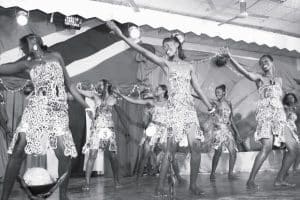
The Bagamoyo Arts Festival takes place in the historical town of Bagamoyo, located on Tanzania’s coast. This week-long festival celebrates the rich cultural heritage of Tanzania through various artistic forms, including music, dance, theater, and visual arts. Visitors can enjoy live performances, workshops, exhibitions, and interactive sessions with local artists. The festival provides a platform for artists to showcase their talents and promotes cultural exchange and appreciation.
Kilimanjaro Marathon
For sports enthusiasts, the Kilimanjaro Marathon offers a unique opportunity to combine athleticism with stunning scenery. Held annually in late February or early March, this international marathon attracts participants from around the world. The race takes place at the foothills of Mount Kilimanjaro, offering breathtaking views throughout the course. Whether you’re a seasoned runner or a beginner, participating in the Kilimanjaro Marathon is an unforgettable experience.
Eid al-Adha
Eid al-Adha, also known as the Feast of Sacrifice, is an important religious holiday celebrated by Muslims worldwide. The date of Eid al-Adha varies each year, as it follows the Islamic lunar calendar. During this festival, Muslims commemorate the willingness of Ibrahim (Abraham) to sacrifice his son as an act of obedience to God. In Tanzania, Muslims gather for prayers, family meals, and the exchange of gifts. It’s a time of joy, generosity, and community spirit.
Is August a good time to visit Tanzania?
The weather in Tanzania Africa in August presents a fantastic opportunity to visit Tanzania and experience its incredible wildlife, natural beauty, and vibrant culture. The milder temperatures, abundance of wildlife, and the chance to witness the Great Migration make it an ideal time for a safari adventure. While the occasional rain showers may occur, they are typically brief and do not significantly impact travel.
For more articles related to Things to Do in Tanzania (Zanzibar), click here!
























